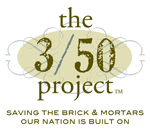by Timothy Rutt
 The proposed "Clean Water, Clean Beaches" parcel tax will be up for a hearing on Tues., Jan. 15, at the Board of Supervisors hearing room, and all protests must be in by that date.
The proposed "Clean Water, Clean Beaches" parcel tax will be up for a hearing on Tues., Jan. 15, at the Board of Supervisors hearing room, and all protests must be in by that date.
County supervisor Michael D. Antonovich has already weighed in on the measure, saying "“Property owners, schools and businesses already pay flood control taxes and now they are being asked to fork over more money at a time when families are struggling, schools are hurting and businesses are fleeing the state.”
The proposal is an added parcel tax on each property in the county that will go to fund flood control and anti-pollution measures. It was mailed to property owners in a flyer that has been criticized for looking like "junk mail," and hiding the protest form in the interior of the flyer.
If a majority of property owners do not protest the property tax, it will go to election.
Michele Zack of Altadena Heritage said that "Altadena Heritage is in process of deciding whether to officially protest this measure — not because we don't believe in the need to address non-point pollution and storm run off as major environmental problems — but because as written, the measure offers little accountability or clarity on how these goals will be achieved." Four members of the board met with other community members to discuss the measure earlier this week. While not taking a stance, they have created a sample protest letter (which appears at the end of this article).
Property owners can also fill out the protest letter that came with the flyer, if they still have it. If you've misplaced the flyer, it is also possible to retrieve a protest form online or call (800) 218-0018 or email water.info@dpw.lacounty.gov to ask for more information.
To view sample flyer click the following link: http://antonovich.com/wp-content/uploads/2012/12/LACWCB_Ballona-Creek-Watershed-Notice1.pdf. Your own county parcel number must be on the protest letter.
Altadena Heritage's sample protest letter appears after the jump.
Date
Los Angeles County Clean Water, Clean Beaches Measure Protest LetterExecutive Officer of the Board of Supervisors
P.O. Box 866006
Los Angeles, CA 90086
Gentlemen:
X I protest the proposed clean water fee.
Assessor's Parcel Number: xxxx-xxx-xxx
Parcel Address: Street Address
Altadena, CA 91001
I am not opposed to the concept of this measure, or to a fee supporting its goals. However, I protest it because it is inadequately thought out and provides few details on how, and no assurance of when, cleaner water and beaches will be achieved. It lacks accountability and doesn’t explain how programs (or those implementing them) will be chosen and overseen. The process of how property will be asessed is not transparent. More developed proposals need to be presented regarding:Print Name ______________________________ Sign Name_____________________________
- Watershed authority groups receiving 50% of the funds. What would their legal structure and governance be?
- Needs identification. The Engineer's Report refers to an "overall needs assessment utilizing the collective findings of several independent studies and evaluations of various segments of the storm water infrastructure within the District," and lists those studies. But, no synthesis or summary is provided, other than a statement on page 26 that "the cost ... will most certainly far exceed the revenues being proposed" of the $296,730,000 annually. Such sloppy accounting to citizens being asked to pay infers only that someone thought $300 million sounded about right, and that the county will ask for more later.
- Criteria for project selection. While lists of possible eligible projects are provided, no idea as to how these would be prioritized or rated is given. Will the majority of funds go to street sweepers or to groundwater recharge basins? Or something else — like city staff, consultants, and more studies? Cities need leeway to decide which projects make sense, but policy guidance and an accountability mechanism for the proposed watershed authority groups is needed.
- Longevity of the measure. While the task is large and solutions uncertain, there should be an established time limit, such as 10, 15, or 20 years.



